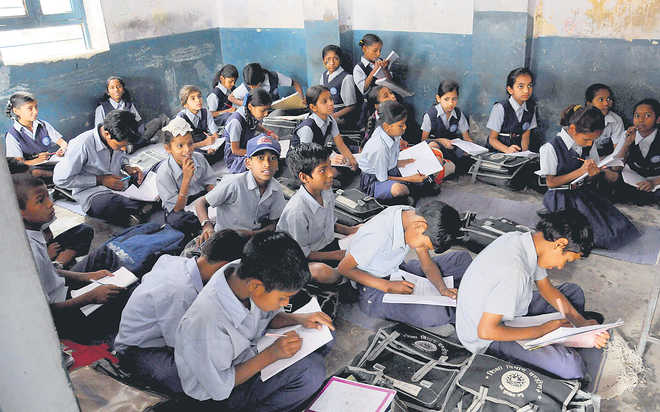
Left behind: Surveys are showing a disturbing decline in educational outcomes.
Yogendra Yadav
Two major reports on the quality of education were released in the country last month. One official and another unofficial. Both these reports can provide a very comprehensive view of what our education has delivered to the country. The official report focuses on what the children have learnt in different subjects in school, while the unofficial report shows us the mirror to what our students can do with whatever they have learnt. In any other country these two reports should have been headline material. Any other country serious about its future should have had reams of newspaper reports about these two surveys. This should have led to hours of television reporting and panel discussions, but not so with us in India. We have time to discuss a film that is yet to be released and is about a character who never existed. But we don’t have time to discuss the fate of our next generation. We Indians are like this only.
The unofficial survey is the Annual State of Education (ASE) Report-2017 released by NGO Pratham. For well over a decade, Pratham’s reports have been drawing attention to the deficits in the quality of education in rural India. This time, the report was a special one named ‘Beyond the Basics’ and focused on the learning achievement levels of students between the age of 14 and 18 years. The report covered one district in 24 states each and went to over 23,000 households to ask young persons a series of questions. Well-designed and effectively packaged, this survey received some attention, but more for questions peripheral to its main concern about the quality of education.
The other survey is the well respected National Achievement Survey conducted by the National Council for Educational Research and Training (NCERT). In its coverage and rigour, this survey is far superior. It covers every one of the 701 districts of the country, 1.1 lakh schools and about 22 lakh students. The value of the survey is in its ability to give us reliable information at the district level as well. Predictably, this report is written in dry officialese and the insights buried under difficult-to-understand tables and graphics. For some inexplicable reason, the NCERT decided not to release the national report first. Instead what we have, as of now, are district-level disaggregate reports — at least 12 reports for each district, that make it a very tough reading.
The ASE study is more crucial because 10 per cent of India’s population falls in the 14 to 18 age group. This lot is very close to the income earning group and, therefore, indicates the preparedness of the rural youth to lead productive lives as adults. So, the country seems to have two sets of problems. The first is that not many jobs are being created and the second is that though the numbers of students continuing beyond school is increasing rapidly, India is not yet ready to prepare them to meet the future.
The findings of the ASR report confirm what we have known for quite some time, that school enrolment is no longer the biggest concern of our education. Only 14 per cent of these students were not enrolled in any school. The real challenge now is the quality of education.
The report gives a dismal reading of what our schools do in terms of quality of education. About a quarter of these 14 to 18-year-old students cannot read a basic text in their own mother tongue, something they should have been able to do by the time they turn eight. As many as 57 per cent of those surveyed cannot do an elementary arithmetic operation like dividing 591 by 4. Most of them study some English in school, but nearly half of them cannot read a simple sentence like ‘What is the time?’
Moving away from formal scholastic achievement, let us look at what 14 to 18-year-old Indians can do with whatever they have learnt in school. This too does not inspire much confidence. About a quarter cannot even count money, 40 per cent cannot read a clock, and 60 per cent cannot do elementary calculation of time and length.
Thinking of operational literacy, the survey shows that 46 per cent of the school educated youth cannot understand basic instructions written on a packet, 36 per cent cannot do market calculations and as many as 58 per cent cannot identify their own state on a map of India.
The other bigger, more authentic official survey will take much longer to decode, but the initial picture shows signs of worry. This survey allows us comparison across various categories of students in and different points in time. The only good news is that the achievement gap between boys and girls has reduced substantially, and in some subjects, girls are doing better than boys.
However, the gap between rural and urban schools, between students from disadvantaged communities (SC, ST, OBC) and the more privileged communities, and that between government school and private schools is uncomfortably high. More disturbingly, this fourth cycle of national achievement survey shows a decline in the quality of educational outcomes.
In a sense what both the surveys reveal is nothing new. It should not shock anyone who has been looking at the state of affairs in ordinary schools of the country, mostly in rural India. The surveys show us a mirror by giving solid evidence of what is wrong with our school education. Both the studies also provide us with tools to address this road; tools that can be used at the level of district where correction is required. The real question remains whether anyone is listening. Going by the grand announcements and little allocation for these in the Union Budget, the answer is not very optimistic.



























